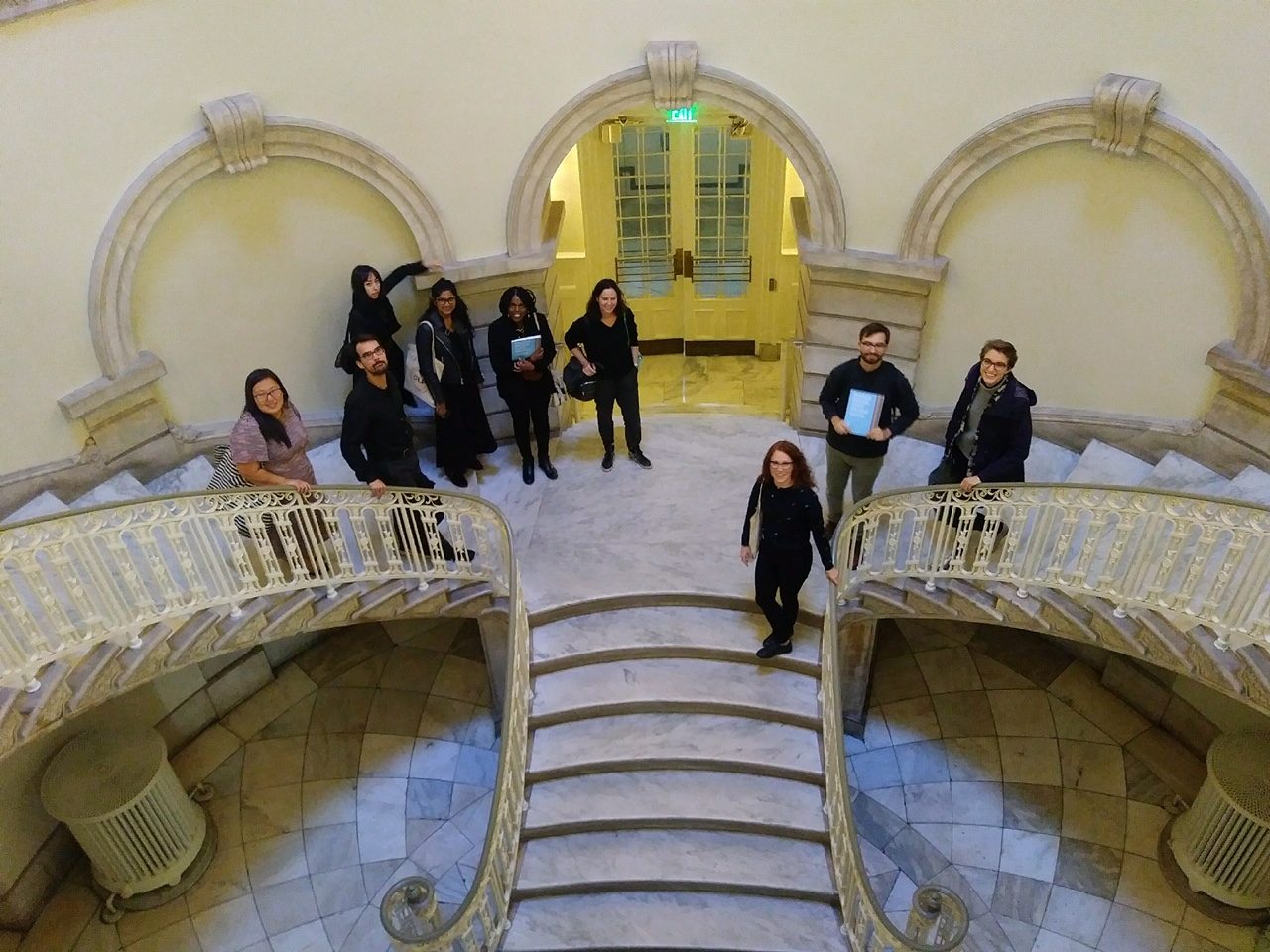by: Amanda Miller and Nadia Habib
Affordable housing is essential to a just, diverse, and community-serving city. New York is currently confronting its own housing affordability crisis, tackling the issue through grassroots efforts, as well as through policy initiatives like the Housing New York 2.0 plan and the Public Design Commission’s (PDC) recent release of Designing New York: Quality Affordable Housing. As architects and designers, we are problem solvers; as civic leaders we should strive to use our skills to advocate for issues that connect the built environment to society. On October 12, 2018 the AIANY Civic Leadership Program (CLP), delved into affordable housing by visiting with the PDC at New York City Hall, followed by an open forum and workshop with Chhaya, a Jackson Heights-based community development corporation focused on housing advocacy and economic development in the South Asian community.
At the PDC, CLP members met with Justin Garrett Moore, Executive Director, and Rebecca Macklis, Design & Special Projects Manager. We learned from them not only about the commission’s work, but also had the opportunity to discuss their unique pathways to civic service. We explored the rewards and challenges of working with and across city agencies in the review process and in the creation of Designing New York. Standing on the steps of City Hall before returning to the Center for Architecture, we were reminded of the importance of advocacy and engagement.
To further our understanding, we sought out community-based perspectives as well, welcoming Will Spisak, Director of Programs, Silky Misra, Neighborhood and Housing Preservation Specialist, and Maxwell Cabello, BASE Fellow, all from Chhaya. Chhaya’s organizing and advocacy efforts are truly holistic, focusing on the interconnected realms of education, employment, civic participation, community pride, mental health, and well-being. Among their many activities, Chhaya has, for the past decade, actively led advocacy around accessory dwelling units through their BASE (Basement Apartments Safe for Everyone) Campaign. The campaign focuses on opening additional units to the market, while preserving affordability and offering protection to both landlords and tenants. While New York City currently does not have an accessory dwelling unit code, many major cities across the United States have adopted various forms of accessory dwelling unit legislation; recently a pilot program was announced for East New York.
With Chaya, CLP members had an open discussion about the struggles and complexities of affordable housing, landlord and tenant rights, and the ways architects can be a resource for organizers, in particular with regard to BASE. Spisak spoke about the long history of housing discrimination and challenges to immigrant communities, while Misra offered her perspectives as a trained architect working within a community development corporation.
The development session concluded with a design charrette developed by CLP and Chhaya, The goal was to simulate the physical conditions and challenges that BASE deals with on a regular basis.. Teams of four were given schematic basement and cellar floor plans; each team’s unit was to be made legal using a given program and a draft accessory dwelling unit building code that drew on Chhaya’s research and adaptations from the NYC Building Code. Through the course of the workshop, teams were tasked with configuring the space in both plan and section, while paying attention to budgets and unexpected setbacks that often pose as obstacles for conversion efforts—from environmental hazards to financial shortfalls.
Following the charrette, teams acknowledged challenges of dealing with obstacles and unknowns. Due to budgets constraints and mitigating factors, some teams were forced to revise their original concepts; others expressed skepticism that the design could be resolved with the provided budgets. These issues define the design and organizing process, particularly in economically vulnerable communities.
The many layers to affordable housing were only beginning to be revealed throughout the afternoon. Using Chhaya’s BASE campaign as an example, it became clear that affordability in is an issue that affects entire communities and individuals on both sides of the rental equation. Chhaya continued to remind us that illegal basements have and will continue to exist as long as the affordable housing crisis continues. Both tenants and owners are often part of the most vulnerable groups in our society and creating paths to legalization can afford benefits to both. As designers, it is important to understand both perspectives and to emphasize the collaborative nature the design process. We are not only addressing the complexities of the existing built environment, but also engaging with the social and economic issues of the communities we serve.








